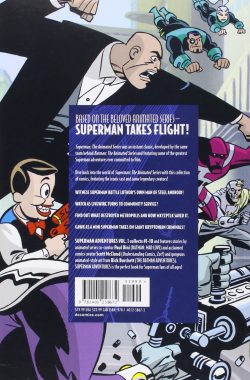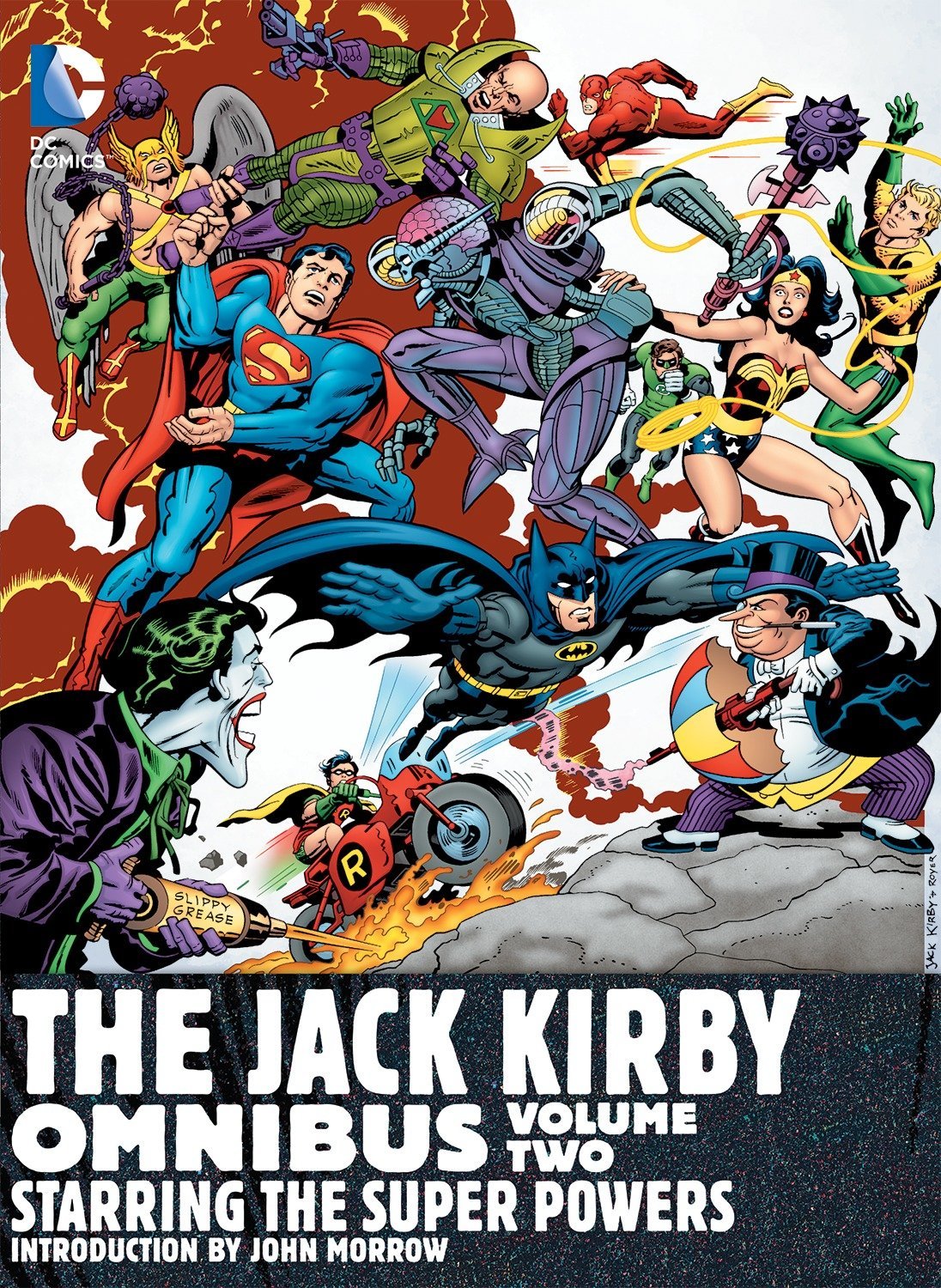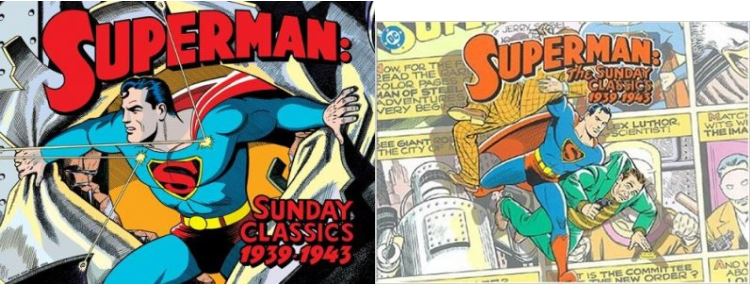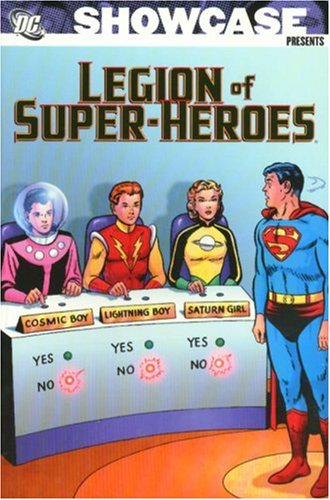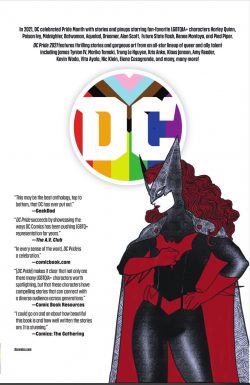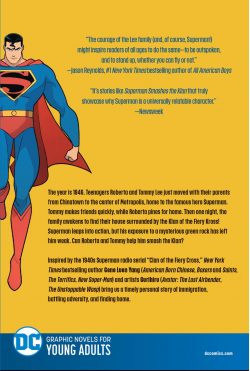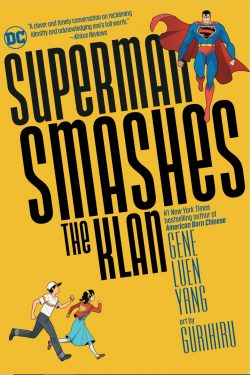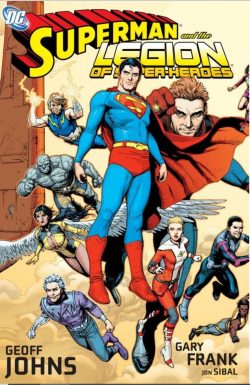
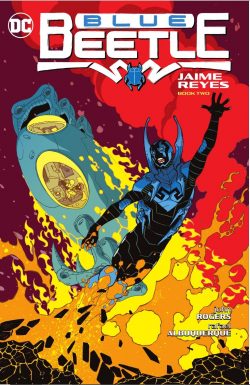
By John Rogers, J. Torres, Keith Giffen, Justin Peniston, Rafael Albuquerque, Freddie E. Williams II, Andy Kuhn, David Baldeón, Dan Davis, Steve Bird & various (DC Comics)
ISBN: 978-1-7795-2027-2 (TPB/Digital edition)
As the most recent incarnation of the venerable Blue Beetle brand makes the jump from comic book limbo and kids’ animation reruns into live action movie madness, here’s a recent collection from the superb 36-issue run that began in 2006: one of the most delightfully light-hearted and compelling iterations of the Golden Age stalwart and still pure joy to behold…
The Blue Beetle first appeared in Mystery Men Comics #1, published by Fox Comics and cover-dated August 1939. The eponymous lead character was created by Charles Nicholas (AKA Charles Wojtkowski): a pulp-styled mystery man who was a born nomad. Over the years and crafted by a Who’s Who of extremely talented creators, he was also inexplicably popular and hard to kill: surviving the failure of numerous publishers before ending up as a Charlton Comics property in the mid-1950s.
After releasing a few issues sporadically, the company eventually shelved him until the superhero revival of the early 1960s when Joe Gill, Roy Thomas, Bill Fraccio & Tony Tallarico revised and revived the character in a 10-issue run (June 1964, February 1966). Cop-turned-adventurer Dan Garrett was reinvented an archaeologist, educator and scientist who gained super-powers whenever he activated a magic scarab with the trigger phrase “Khaji Da!”
Later that year, Steve Ditko (with scripter Gary Friedrich) utterly reimagined the Blue Beetle. Ted Kord was an earnest and brilliant young researcher who had been a student and friend of Professor Garrett. When his mentor seemingly died in action, Kord trained himself to replace him: a purely human inventor/combat acrobat, bolstered by ingenious technology. This latter version joined DC’s pantheon during Crisis on Infinite Earths, earning a solo series and quirky immortality partnered with Booster Gold in Justice League International and beyond…
Collecting Blue Beetle (volume 7) #13-25 and spanning June 2007 to May 2008 – the saga follows the hallowed formula of a teenager suddenly gifted with great powers, and reveals how some heroes are remade, not born – especially when a sentient scarab jewel affixes itself to your spine and transforms you into an armoured bio-weapon.
At the height of the Infinite Crisis, El Paso high-schooler Jaime Reyes found a weird blue jewel shaped like a bug. That night, as he slept, it invaded him and turned him into a bizarre insectoid warrior.
Almost instantly, he was swept up in the chaos, joining Batman and other heroes in a climactic space battle. Inexplicably returned home, Jaime revealed his secret to his family and tried to do some good in his hometown of El Paso but had to rapidly adjust to huge changes. Best bud Paco had joined a gang of super-powered freaks, he learned that the local crime mastermind was his other best bud Brenda’s foster-mom, and a really scary military dude named Christopher Smith AKA Peacemaker started hanging around. He claimed the thing in Jaime’s back was malfunctioning alien tech, not life-affirming Egyptian magic and that he also had an unwelcome and involuntary connection to it…
We resume this cinematically-inspired return engagement with John Rogers, Rafael Albuquerque, David Baldeón & colourist Dan Davis’ ‘Defective’. Here a benevolent (seeming) alien from an interstellar collective named The Reach introduces himself and reveals that the scarab is an invitation used to prepare endangered worlds like Earth for trade and commerce as part of a greater pan-galactic civilisation. Unfortunately the one attached to Jaime has been damaged over the centuries it was here and isn’t working properly.
The Reach envoy is a big fat liar…
The Scarab should have paved the way for a full invasion and once they discover this, Jaime and Peacemaker grasp that The Reach are the worst kind of alien invaders; patient, subtle, deceptive and stocked with plenty of space-tech to sell to Earth’s greedy governments. The only hope of defeating the marauders is to expose their real scheme to the public – which is currently too dazzled by the intergalactic newcomers’ media blitz to listen…
‘Mister Nice Guy’ (Rogers & Albuquerque) finds the Beetle teamed again with erratic Guy Gardner: a Green Lantern who knows all about The Reach and their Trojan Agenda. Here the unhappy allies must defeat the macabre Ultra-Humanite who has sold his telepathic services to the prospective new overlords.
Seeking allies and solutions, Jaime meets Superman in guest creators J. Torres & Freddie Williams Jr.’s ‘Someone to Watch Over Me’: battling electrical anti-villain Livewire before one of the DCU’s gravest menaces manifests in Rogers & Albuquerque’s startlingly powerful change of pace tale ‘Total Eclipso: the Heart’.
‘Something in the Water’ sees elemental menace Typhoon employed by The Reach to endanger a coastal city – and Bruce Wayne’s off-shore oil wells – in a clever, insightful tale packing plenty of punch, before ‘Away Game’ – with contributions from Baldeón & Davis – finds the Beetle and Teen Titans in pitched and pithy battle against the unbeatable alien biker-punk Lobo.
Weirdly whimsical Keith Giffen joins Rogers & Albuquerque next, focusing on Brenda, who has blithely lived her entire life unaware that her surrogate parental unit is El Paso’s crime boss supreme. La Dama is also a hoarder and supplier of alien, futuristic and magical weaponry. The distraught lass learns ‘Hard Truths’ when rival mob Intergang declare war: sending 50-foot woman Giganta to smash La Dama’s family to gooey pulp… until the Beetle buzzes in…
The previous tales were first collected in 2008 as Blue Beetle: Reach for the Stars and are accompanied here by most of sequel volume End Game, which finds the blue boy fighting a very secret war against the seemingly saintly visitors from the stars.
What the Green Lantern Corps already know is that The Reach are rapacious conquerors who follow near-sacrosanct ancient “strategies” to increase their empire. First a scarab converts an indigenous inhabitant into a pathfinder – a devastating marauding bug warrior – before the undetectably orbiting Reach “arrive”, offering weapons and planet-changing technologies to any who want them. And in the interim, the benefactors build world-ripper engines to eventually tear planet and remaining resources into manageable, marketable portions…
Rogers & Albuquerque set up the climactic counterstrike to Armageddon in ‘Fear to Live’, as Peacemaker is selected by a Sinestro Corps power ring due to his ability to “instil great fear”, just as Reach’s Chief Negotiator seeks to take him out. The silent invaders are terrified: desperate to learn why after countless millennia a scarab has rebelled against their infallible programming and created a disobedient, destructive maverick in Reyes.
Having finally deduced the part Peacemaker plays in the rebellion of his strategic weapon, the Negotiator infects Smith with a fully-obedient scarab and transforms him into a monstrous killer-drone. However, the terrifying “Infiltrator” is still no match for Jaime and his now sentient and liberated inner bug, especially after the yellow ring and alien Green Lantern Brik join the struggle…
Before Jaime’s meticulously constructed masterplan to save Earth gets underway, Justin Penniston & Andy Kuhn step in with a powerful tale of mistakes and consequences in #21’s ‘Ghost of a Chance’. Stepping in to quell a riot at a Federal Correctional facility, The Beetle finds the latest incarnation of The Spectre impatiently executing murderers the authorities haven’t got around to yet. Severely outmatched and deeply emotionally conflicted, Jaime needs the sage advice of his father and sorceress girlfriend Traci 13 to a get a handle on the Why as much as the How and Who of this crisis…
After almost a year of preparation, the fate of Earth is resolved in End Game parts one to four, by Rogers, Albuquerque & Majors, starting out ‘Under Pressure’ as Earth’s leaders get deeper in debt to the so-amenable Reach, whilst the Beetle and his allies – his parents, Peacemaker, Paco, Brenda and Danni Garrett (granddaughter of the first Blue Beetle) – try to expose the hidden world-ripper stations and uncover a hidden race who are far from what they seem…
The unravelling eternal strategies have sown discord amongst the Reach with Chief Negotiator’s subordinate openly displaying defiance and advocating abandoning the texts and a century of invisible sedition for total savage warfare right now. Pushed into rash action, the big boss targets the Reyes family, but too late…
‘World Tour’ reveals how Blue Beetle has already invaded their orbiting cloaked base, using a tactic and weapon the scarabs have never before used…
All too soon the boy is defeated, captured, tortured and deprived of the malfunctioning scarab designated Khaji Da. As the Negotiator sadistically gloats, he’s unaware that this was the plan: to strike from ‘Outside-In’…
With Traci 13 shielding the Reyes from retaliation, Jaime and his now-sentient symbiotic scarab are methodically taking the Reach apart, provoking a rash public attack on El Paso, the abrupt exposure of the formerly-shielded Reach legions and bases and a gathering of heroes. Can it be merely coincidence that the first responders in concluding clash ‘A Little Help From…’ are Ted Kord’s closest friends and allies, Fire, Ice, Guy Gardner and Booster Gold, or that Jaime has outwitted the perfidious purveyors of illicit high technology with the most primitive methods ever devised by humanity?
… And as Jaime and Khaji Da are plucked from certain death, the rebels leave behind something that will have devastating repercussions for The Reach…
To Be Continued
With covers by Cully Hamner, and Albuquerque this is a smart, fast and joyous thrill ride to delight fans of comics and other, lesser, media forms. There are so few series combining action and adventure with all-out fun and genuine wit, or which can evoke shattering tragedy and poignant loss on command. John Rogers and his stand-ins excel in this innovative and impossibly readable saga and the art is always top notch. With the climactic final battle against the Reach only setting the scene for more and better to come, this is a second chance you probably don’t deserve but should reach out and grab onto with all you’ve got.
© 2007, 2008, 2023 DC Comics. All Rights Reserved.

